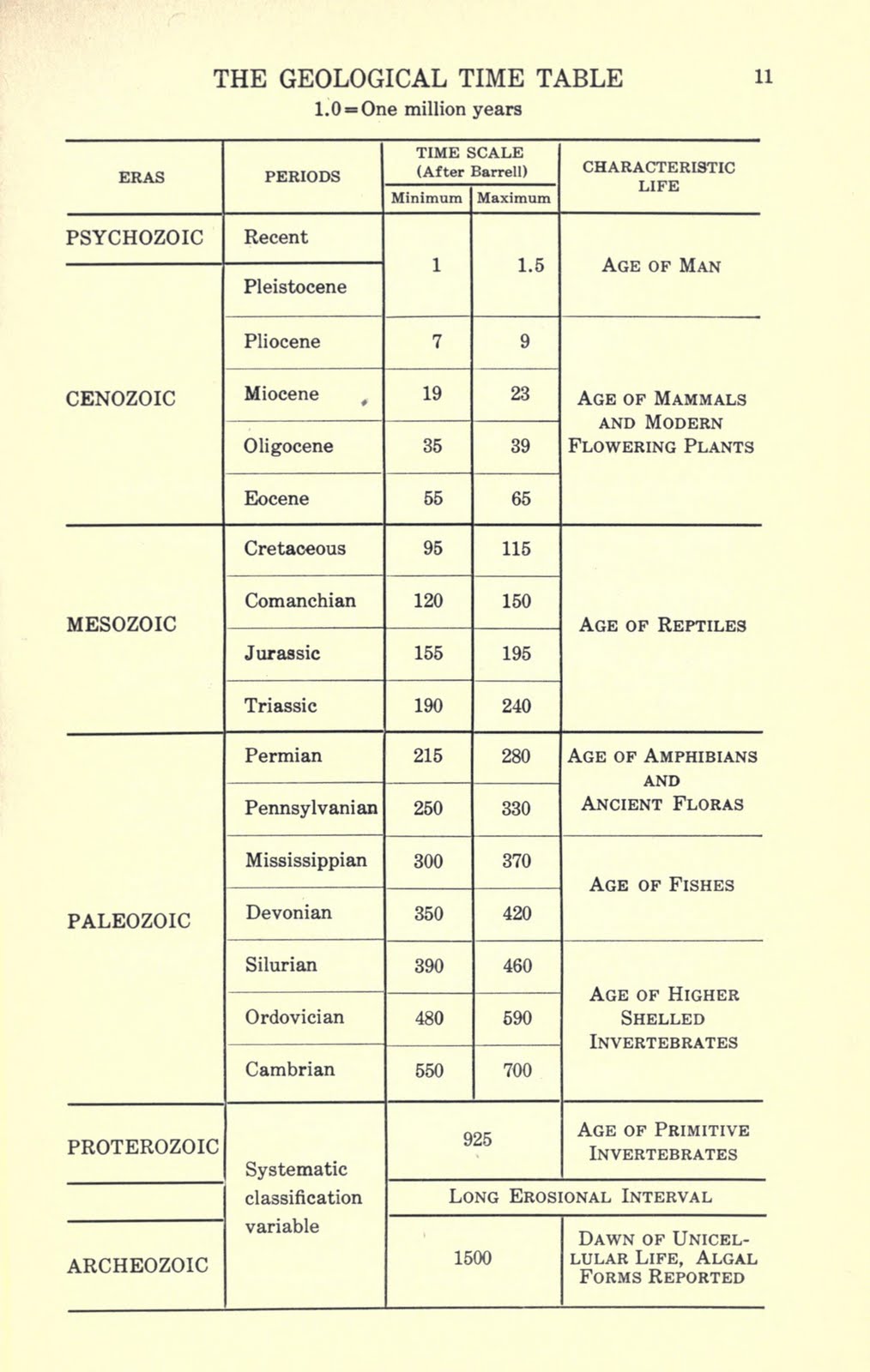Book of the Week: Dating Fossils
“How old is that fossil and how do you know it?”
This is the introductory sentence, and the question addressed, in this week’s book of the week, How Old are Fossils (1927), by Sharat Kumar Roy. According to the author, this is a question that is often asked by visitors to a museum, but it is also a question that is particularly time-consuming to answer. As the author writes,
“A precise answer to such a question is impossible and an adequate one demands a longer time than can usually be afforded. The consequences of inadequate explanation often proved to be unsatisfactory. The visitor becomes skeptical and instead of taking interest in the subject, he seems to be confirmed in his doubts.
In this leaflet is given a condensed, general statement of methods of determining the age of ancient life…It is intended for those who are interested in the age of past life and yet do not intend an exhaustive study of the subject…”
The author begins by discussing previous methods of determining age, including the rate of land erosion and the rate of salt derivation. These methods, however, are flawed. The rate of sedimentation varies according to the “character of the sediments deposited,” whether the river terminates in the sea, thus depositing sediment in the ocean, and severe weather conditions that may affect shallow water sediments. Similar uncertainties exist when using the rate of salt derivation, including an uncertainty about how much salt from shorelines or ocean beds was dissolved into the oceans in the past, or how much salt has been taken from the oceans into rock salt beds on the earth.
Using methods such as trying to determine the earth’s age by considering “the rate of life transformation in successive periods” is challenged by certain species, such as the brachiopods, which have resisted evolutionary change since as long as we have record of them. Similarly, the evolution of other species is extremely accelerated, such as the evolution of fish to amphibians to reptiles to birds to mammals. If we rely on dating methods that take into account how species have changed over time, but know that these changes are directly influenced by shifting environmental factors and not all species encounter changes that require an evolutionary response while others encounter conditions that require a much more rapid response, we quickly learn that this method of calculating age is also unreliable.
The ability to calculate the number of radioactive changes in certain chemicals, however, has changed the game. The star player in the game is uranium, which undergoes a transformation over time, ultimately breaking down into the metal lead and the gas helium. This transformation is unaltered by any external process. Therefore, “Since the rate of transformation is known, data for calculating the age of the mineral and with it the rock formation of which it is a part, can be obtained by measuring the quantity of helium and lead in the rock and comparing it with the quantity of uranium in the same volume of material.” While this method may be somewhat flawed, as helium, being a gas, may partially leak out of its rock home over time, “estimates based on the lead ratios of radio-active minerals offer results consistent among themselves.” With these known factors, 8,000* million years are required for the formation of one gram of lead from uranium.
As a result of these studies, “the earliest life of which we have fossil records is about 1,500,000,000 years old. From this, it could be safely concluded that the inception of life on earth must have taken place much earlier.” Referring to the geological time chart included with the text (and pictured in this post), the author writes, “As we climb higher in the geological column, life becomes more and more complex and specialized. From the one-celled life of the Archeozoic it passes through the invertebrates – fishes – amphibians – reptiles – birds and mammals to man of the Recent time.”
We hope you’ve enjoyed this quick crash course on dating fossils, courtesy of our book of the week, How Old are Fossils (1927), by Sharat Kumar Roy (contributed by the Field Museum). Now go out and find your own fossils and think about the magnitude of time they represent.






Leave a Comment